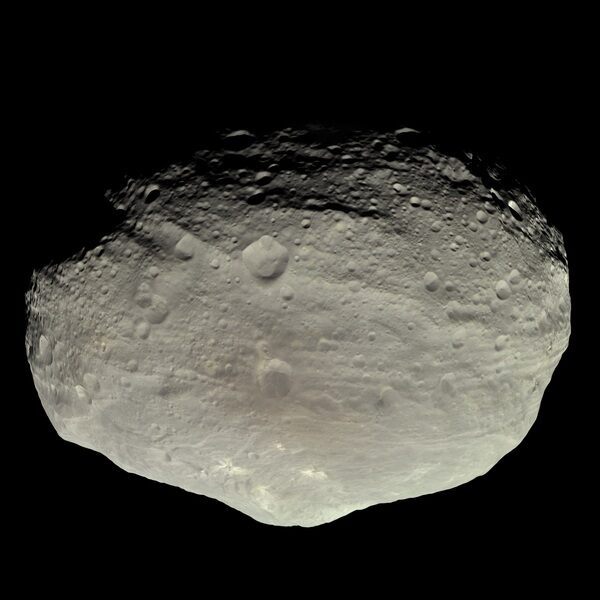4.61" Polished Diogenite Meteorite (76.1 g) Slice - NWA 4664
This is a 4.61" wide (76.1 gram) slice of the diogenite-pm meteorite NWA 4664. It has been cut flat and polished to a glossy finish on one side to highlight the tightly packed clasts. A rare and stunning piece!
Comes with a riker mount display case.
Comes with a riker mount display case.
About Meteorite NWA 4664
NWA 4664 was found in 2006 in Algeria within a large strewn field from which roughly 30 kg of meteorites have been recovered. Multiple stones were collected, together weighing approximately 20 kg. However, the total mass of this fall may be more considering it's most likely paired with NWA 4473. It's classified as an achondrite (diogenite, polymict breccia) composed of closely packed clasts.
Meteoritical Bulletin: Entry for the Meteorite NWA 4664
NWA 4664 was found in 2006 in Algeria within a large strewn field from which roughly 30 kg of meteorites have been recovered. Multiple stones were collected, together weighing approximately 20 kg. However, the total mass of this fall may be more considering it's most likely paired with NWA 4473. It's classified as an achondrite (diogenite, polymict breccia) composed of closely packed clasts.
Meteoritical Bulletin: Entry for the Meteorite NWA 4664
Diogenite Meteorites
Diogenite meteorites are a class of achondritic (stony) meteorites believed to originate from the inner crust of the asteroid (or minor planet) 4 Vesta.
4 Vesta, or simply Vesta, is the second largest object in the asteroid belt, with a mean diameter of about 525 kilometers (326 miles) and an elliptical shape. Vesta is likely the remnant of a destroyed planet, since it still retains a differentiated interior just like the layers of Earth and other rocky planets. It is one of just seven bodies in the solar system that humans have physical samples of. It is also the brightest asteroid visible from Earth, and can be seen with the naked eye!
Diogenites themselves are from a distinct part of Vesta: they come from the inner crust and are plutonic. They formed from intrusive igneous processes: in other words, diogenites were lava that cooled long enough to create crystals larger than what are found in howardites and eucrites, two other kinds of Vesta meteorites more commonly found on Vesta's surface. Thus, diogenites could indicate that Vesta was once part of a larger rocky planet with differentiated layers!
Diogenites are named for the ancient Greek philosopher Diogenes of Apollonia, who was the first person known to suggest that meteorites came from outer space.
Diogenite meteorites are a class of achondritic (stony) meteorites believed to originate from the inner crust of the asteroid (or minor planet) 4 Vesta.
4 Vesta, or simply Vesta, is the second largest object in the asteroid belt, with a mean diameter of about 525 kilometers (326 miles) and an elliptical shape. Vesta is likely the remnant of a destroyed planet, since it still retains a differentiated interior just like the layers of Earth and other rocky planets. It is one of just seven bodies in the solar system that humans have physical samples of. It is also the brightest asteroid visible from Earth, and can be seen with the naked eye!
Diogenites themselves are from a distinct part of Vesta: they come from the inner crust and are plutonic. They formed from intrusive igneous processes: in other words, diogenites were lava that cooled long enough to create crystals larger than what are found in howardites and eucrites, two other kinds of Vesta meteorites more commonly found on Vesta's surface. Thus, diogenites could indicate that Vesta was once part of a larger rocky planet with differentiated layers!
Diogenites are named for the ancient Greek philosopher Diogenes of Apollonia, who was the first person known to suggest that meteorites came from outer space.
$1,950
TYPE
Achondrite (Diogenite, Polymict Breccia)
AGE
LOCATION
Algeria
SIZE
4.61 x 3.81", .12" thick, 76.1 grams
CATEGORY
SUB CATEGORY
ITEM
#301183
 Reviews
Reviews











